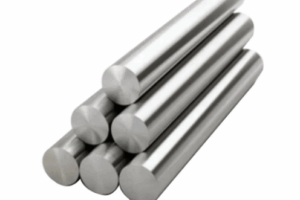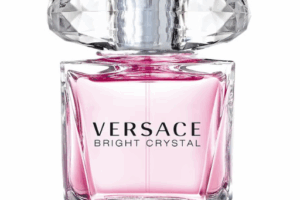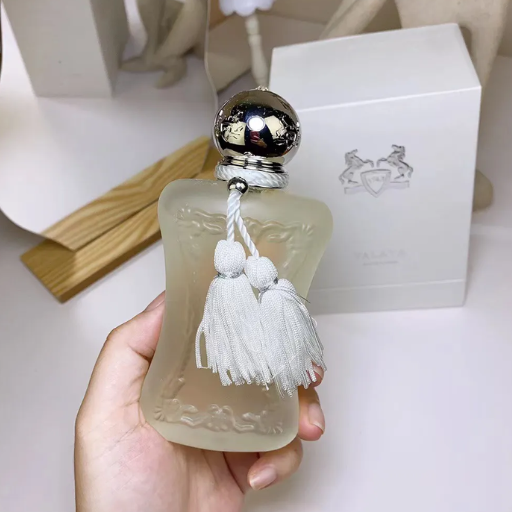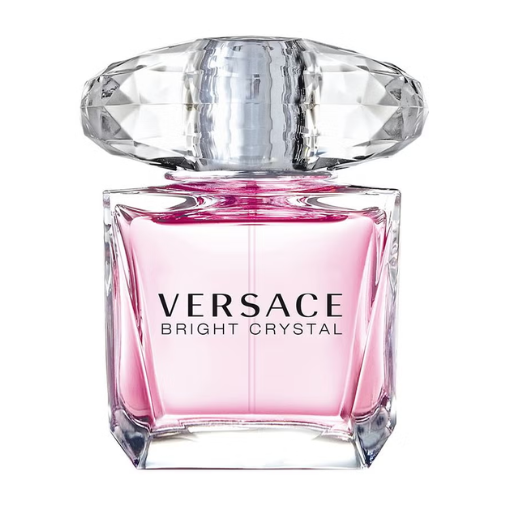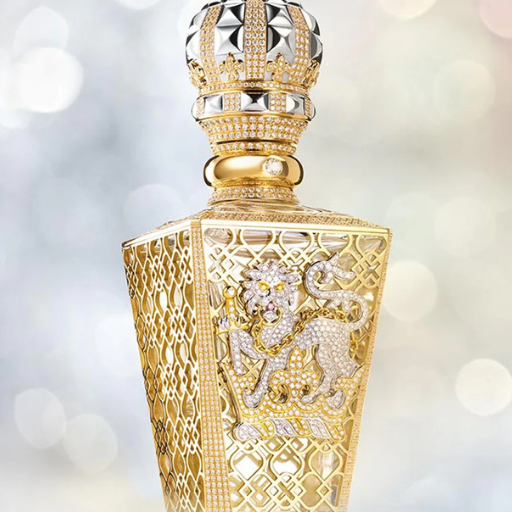When assessing the performance and efficiency of a metal for industrial or day-to-day uses, its thermal conductivity often serves as the primary indicator. Out of the available metals, steel and aluminum arguably have the most significant differences in thermal properties, which affect their suitability for various applications. The understanding of how these metals conduct heat is necessary whether you are working on designing heat exchangers, constructing a building, or manufacturing electronics. This article looks into the captivating comparison of these two metals: their thermal conductivity, practical uses, and other factors that are crucial in aiding your decision-making. You are about to learn the science and practicality of these metals that will help you with your next project.Find more info now
What is the Thermal Conductivity of Steel?

The thermal conductivity of steel depends on its composition and particular type. Still, it is relatively low compared to other metals, with a general value between 15 and 50 W/m·K (watts per meter per kelvin). For instance, stainless steel, famous for its corrosion resistance, falls within the lower range, making it a poor candidate for heat transfer. Due to its beneficial thermal properties, this metal is used in structures, cookware, and other tasks requiring heat retention or insulation.
How Does Carbon Steel Compare to Stainless Steel?
| Key Point | Carbon Steel | Stainless Steel |
| Main Alloying Element | Carbon | Chromium (≥10.5%) |
| Carbon Content | Up to 2% | 0.03% to 1.2% |
| Corrosion Resistance | Poor | Excellent |
| Strength | High (varies with carbon content) | High (varies with grade) |
| Ductility | Low to medium | High |
| Cost | Lower | Higher |
| Magnetic Properties | Magnetic | Some grades are non-magnetic |
| Applications | Structural, tools, and automotive parts | Medical, food, decorative, industrial |
| Weldability | Good | Varies by grade |
| Rust Resistance | Rusts easily | Resists rust |
Factors Affecting Heat Transfer in Steel
Several effects may be noticed regarding the heat transfer capabilities of steel, which plays a vital role in diverse industrial and engineering practices. These effects can be beneficial in the optimization process. Here are five of them:
- Composition and Alloying Elements
Alloying elements such as chrome, nickel, and carbon greatly impact steel’s thermal conductivity. For instance, stainless steel has a more complex composition than carbon steel, leading to a noticeable difference. As a result, its thermal conductivity is much lower.
- Temperature
The ability of steel to conduct heat greatly varies with ambient temperatures. In contrast to hotter, conducting environments, cooler temperatures tend to be better for circulation, so it’s best to retain thermal energy.
- Microstructure
The microstructure classification of a particular steel, be it martensitic, austenitic or ferritic, is foundational for the heat transfer. Thermally conductive ferritic steels are a good example as they outperform austenitic steels.
- Surface Finish and Coatings
Combining a polished or rough surface on steel plating leads to a tremendous change in the conduction rate. Thermally insulating or anti-corrosive coatings, on the other hand, can prove very useful as they increase heat conduction.
- Density and Thickness
Thickness directly influences changing the temperature of the steel, where a decrease will cool or heat it quicker, and an increase will retain heat for longer. The density also affects the conduction capabilities of a given section.
Exploring the Thermal Conductivity of Aluminum

Aluminum’s emerging use in technology and electrical components comes as no surprise due to its excellent thermal conductivity, which sits above most metals like steel at around 205 W/m·K. Its quick heat dissipation creates excellent thermal conductivity within heat exchangers, car components, and electronics. In addition to those factors, aluminum is alloyed with other metals like copper and manganese, making it even stronger while keeping its lightweight properties. Moreover, it features resistance against corrosion, further increasing its lifespan in various fields.
Why is Aluminum a Preferred Choice for Heat Sinks?
Many metals could work efficiently as heat sinks, but I prefer aluminum. Not only does it come at a better cost, but it ensures excellent reliability over the years. Unlike other materials, aluminum’s lightweight features provide ease while working, allowing for faster results. Most importantly, aluminum’s greatly improved composition allows for outstanding thermal conductivity, which works towards efficient heat dissipation.
Role of Aluminum Alloys in Thermal Conductors
| Key Point | Details |
| Thermal Conductivity | High, varies by alloy composition |
| Lightweight | Ideal for weight-sensitive applications |
| Common Alloys | 1050A, 6060, 6061, 6063 |
| Applications | Aerospace, automotive, electronics |
| Manufacturing Methods | Casting, extrusion, additive manufacturing |
| Heat Dissipation | Effective in heat sinks and thermal management |
| Cost Efficiency | More affordable than copper |
| Durability | 6000 series alloys balance strength and conductivity |
| Customization | Easily tailored for specific industrial needs |
| Environmental Impact | Lightweight reduces energy consumption in applications |
Steel vs Aluminum: Which is a Better Conductor?

Aluminum has a higher thermal conductivity than steel. This is because aluminum has a thermal conductivity of about 205 W/mK, while steel only has around 50 W/mK. This implies that aluminum is more efficient at transferring heat, making it ideal when heat needs to be dissipated quickly. Moreover, aluminum is lightweight and corrosion-resistant, making it more useful than steel. Therefore, in situations where thermal efficiency is required, aluminum is more suitable.
Factors Affecting Electrical Conductivity in Metals
The expression of electrical conductivity in metals refers to the ease with which electrons can flow through a metal. As with other metal compounds, conductivity is influenced by the atomic structure of the metal, the temperature of the metal, and the number of electrons present in the metal. It is known that metals like copper and silver, which have free electrons, exhibit greater conductivity.
Comparing Metal Conductivity
- Silver (Ag): Silver has the highest conductivity of approximately 63 x 10^6 Siemens per meter (S/m). Its expensive value limits silver’s use to applications like these, where precision is required, putting it to use in components of electronic equipment and specialized connectors.
- Copper (Cu): Coming in next to silver, copper has a conductivity of about 59 x 10^6 S/m. Since copper is more widely available, it serves as the industry standard for electric wiring and various other forms of electrical conduction.
- Gold (Au): Gold offers a conductivity of approximately 45 x 10^6 S/m. While it is less conductive than copper and silver, its outstanding resistance to corrosion makes it ideal for circuit boards and plated surfaces.
- Aluminum (Al): Power lines, particularly the overhead cables, utilize aluminum as a construction material due to its lightweight and cost-effectiveness despite possessing only two-thirds of copper’s conductivity, approximately 37 x 10^6 S/m.
- Iron (Fe): With an exceedingly lower conductivity of 10 × 10^6 S/m, iron ranks at the lower tier of metals as a choice for electrical applications.
The Role of Temperature
Apart from conductivity, temperature is a significant contributor to the modification of electrical conduction. In most cases, metals encounter an increase in resistance with temperature rise. The thermal energy is too high, interfering with the flow of free electrons, drastically reducing the material’s efficiency as a conductor. For example:
- The resistance of pure copper increases approximately 0.393% for every degree Celsius rise in temperature.
- Like silver, copper does, too, but since silver dominates with a higher baseline ability to conduct electricity, it remains superior to all other materials at higher temperatures.
After explaining these properties, one can realize the importance of selecting a metal with very specific electrical properties. Weighing factors like low cost, high conductivity, low corrosion, resistive materials, and weight helps engineers achieve optimal performance in many settings and industries.
Impact of Temperature on Conductivity in Aluminum and Steel
| Key Point | Aluminum | Steel |
| Thermal Conductivity | High, decreases with temperature rise | Low, less affected by temperature |
| Electrical Conductivity | High, decreases with temperature rise | Moderate, decreases with temperature |
| Electron Mobility | High, reduced at higher temperatures | Lower than aluminum |
| Phonon Scattering | Increases with temperature, reducing flow | Less significant than in aluminum |
| Applications | Electronics, heat sinks, and automotive | Structural, industrial, load-bearing |
How Does Heat Affect Stainless Steel and Aluminum?

The differences in composition and properties of stainless steel and aluminum affect how each material is influenced by heat. Concerning stainless steel, it holds its strength and remains stable at temperatures up to. As such, it does not deform easily. The material’s structure does, however, change with prolonged exposure to heat, reducing its resistance to corrosion. Aluminum is more prone to the effects of heat, on the other hand. It softens at lower temperatures than stainless steel and experiences an adverse effect on its mechanical strength. As such, this makes aluminum ideal for weight-sensitive applications. In contrast, it is less suitable for use where extreme or consistent heat is a factor.
Comparison of Thermal Conductivities at Room Temperature
At room temperature, aluminum’s efficiency in heat transfer is superior to that of stainless steel. This is due to its higher thermal conductivity of 205 W/m·K, compared to 15-25 W/m·K for stainless steel.
Effects of Corrosion on Conductivity for Steel
Steel’s structure is degraded by corrosion, and non-conductive oxides form on the surface, significantly affecting the material’s thermal and electrical conductivity. When steel corrodes, a barrier called iron oxide, or rust, forms, containing the electrons needed for conductivity. Because it is a barrier, the material’s electrical conductivity lessens with time. Studies show that varying types and extents of corrosion lead to a loss of 20 to 30 percent of electrical conductivity in steel due to corrosion.
The presence of rust significantly affects heat transfer efficiency due to its accumulation. While steel’s thermal conductivity is approximately 15-25 W/m·K, it’s pertinent to mention that wrought iron does not fall under this category. Wrought iron and corroded steel demonstrate even weaker performance. Studies show that heavily corroded steel poses problems with heat dissipation, which can hinder the ability of a device to maintain constant thermal regulation.
Protective coatings, maintenance, and the application of alloys like stainless steel go a long way toward shielding said components from corrosion. Such measures work toward sustaining the steel’s integrity while also protecting its conductive properties, thereby increasing the reliability of steel in numerous industrial applications.
Measuring Watts per Kelvin per Meter in Aluminum vs Steel – Detailed Comparison and Data
With the metric units of watts per kelvin per meter (W/m·K) describing thermal conductivity, it is easy to see how it is equally referred to as a measure of a material’s ability to conduct heat. Due to their differences in atomic makeup and structure, aluminum and steel have definable levels of thermal conductivity. Below, a comparison will follow:
- Aluminum 6061:
The thermal conductivity of copper is roughly 167 W/m·K, which is high enough to make it a capable conductor of heat. This enables its use in the manufacturing of heat exchangers and electronic thermal solutions, cementing its role in other copper alloys as well.
- Stainless Steel (Grade 304):
Lower thermal conductivity of roughly 16.2 W/m·K is aluminum’s structural and industrial counterpart. This steel’s lower heat conductivity is compensated for by its strength and anti-corrosive properties, which make it ideal for use everywhere.
- Pure Aluminum:
With copper’s competitive alloys, around 235 W/m·K stands out as the standard for thermal conductivity sought after in kitchenware and electrical systems. Claiming the top spot, pure aluminum has placed itself as highly prized for its superior heat transfer capabilities.
- Carbon Steel:
Conductivity acts as a range marker, ranging between 45 and 54 W/m·K, depending on the composition. The best way to categorize its purposes is halfway between aluminum and stainless steel, with great conductivity on one end and limited use across heat-sensitive workplaces on the other.
- Aluminum Alloy 2024:
It demonstrates a thermal conductivity of approximately 121 W/m·K, which makes it suitable for use in the aerospace and automotive industries, where moderate heat transfer occurs alongside a verifiable structure.
These data points stress the remarkable differences between aluminum and steel’s heat conduction properties, noting their respective advantages and appropriate applications in different industrial situations.
Frequently Asked Questions (FAQ)
Q: What is thermal conductivity, and why is it essential in metal applications?
A: Thermal conductivity is a material’s ability to conduct heat. It is crucial in metal applications because it determines how quickly heat can be transferred through the material, affecting efficiency and performance in uses like automotive and architectural applications.
Q: How does steel’s thermal conductivity compare to aluminum?
A: Steel has a lower thermal conductivity than aluminum, which conducts heat more slowly. However, because aluminum is lightweight and has higher thermal conductivity, It is often preferred in applications where efficient heat transfer is critical.
Q: Why might steel be chosen over aluminum despite its lower thermal conductivity?
A: Steel, including stainless steel and other steel alloys, may be chosen over aluminum for its durability, strength, and resistance to rust. These properties make it suitable for environments where structural integrity and longevity are prioritized over thermal performance.
Q: How does the thickness of a metal affect its thermal conductivity?
A: A metal’s thickness can impact its ability to conduct heat. Thicker materials may conduct heat more slowly, especially metals with low thermal conductivity like steel. This is an important consideration in applications requiring precise temperature control.
Q: In what scenarios would aluminum be preferred for its thermal conductivity?
A: Aluminum would be preferred in applications like heat exchangers, electronics cooling, and automotive parts, where its higher thermal conductivity and lightweight properties enhance performance and efficiency.
Q: Can steel’s thermal conductivity be improved?
A: Yes, steel’s thermal conductivity can be improved by alloying it with other metals, such as copper. However, steel will still have much lower conductivity than aluminum, making it less ideal for applications where high thermal conductivity is essential.
Q: Is copper a better heat conductor than steel and aluminum?
A: Yes, copper is more able to conduct heat than steel and aluminum, which is why it is often used in applications requiring excellent heat transfer, such as the copper bottom of a cooking pan.
Q: What role does the surface of a metal play in thermal conduction?
A: A metal’s surface condition can influence its thermal conduction. Smooth surfaces facilitate better heat transfer, while rough or oxidized surfaces can act as insulators, reducing the material’s ability to conduct heat.
Q: How does the environment affect the thermal conductivity of metals?
A: The environment, including temperature and exposure to elements, can affect a metal’s thermal conductivity. For example, rust can form on steel in humid environments, further lowering its thermal conductivity.
Q: Why are metals with lower thermal conductivity rarely as low as iron?
A: Metals with lower thermal conductivity, like certain steel alloys, are rarely as low as iron because they are engineered to balance thermal properties with mechanical strength and other desirable characteristics for specific applications.
